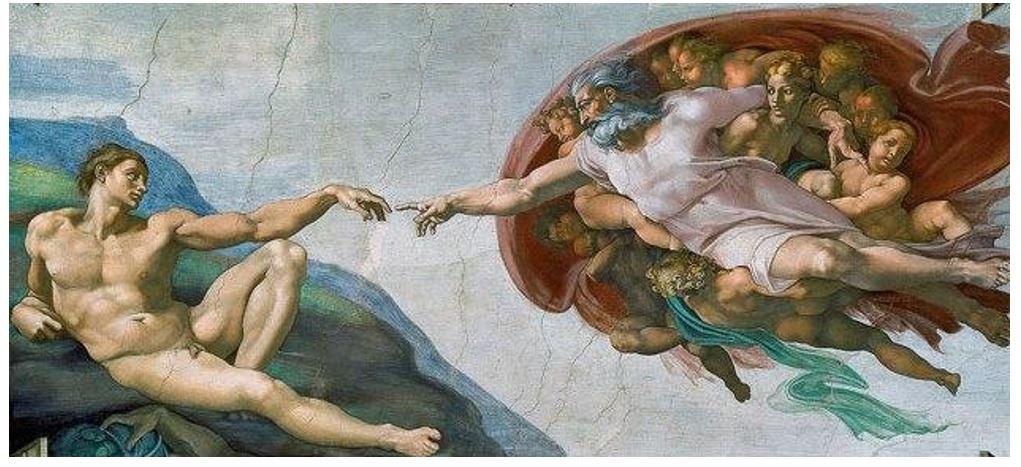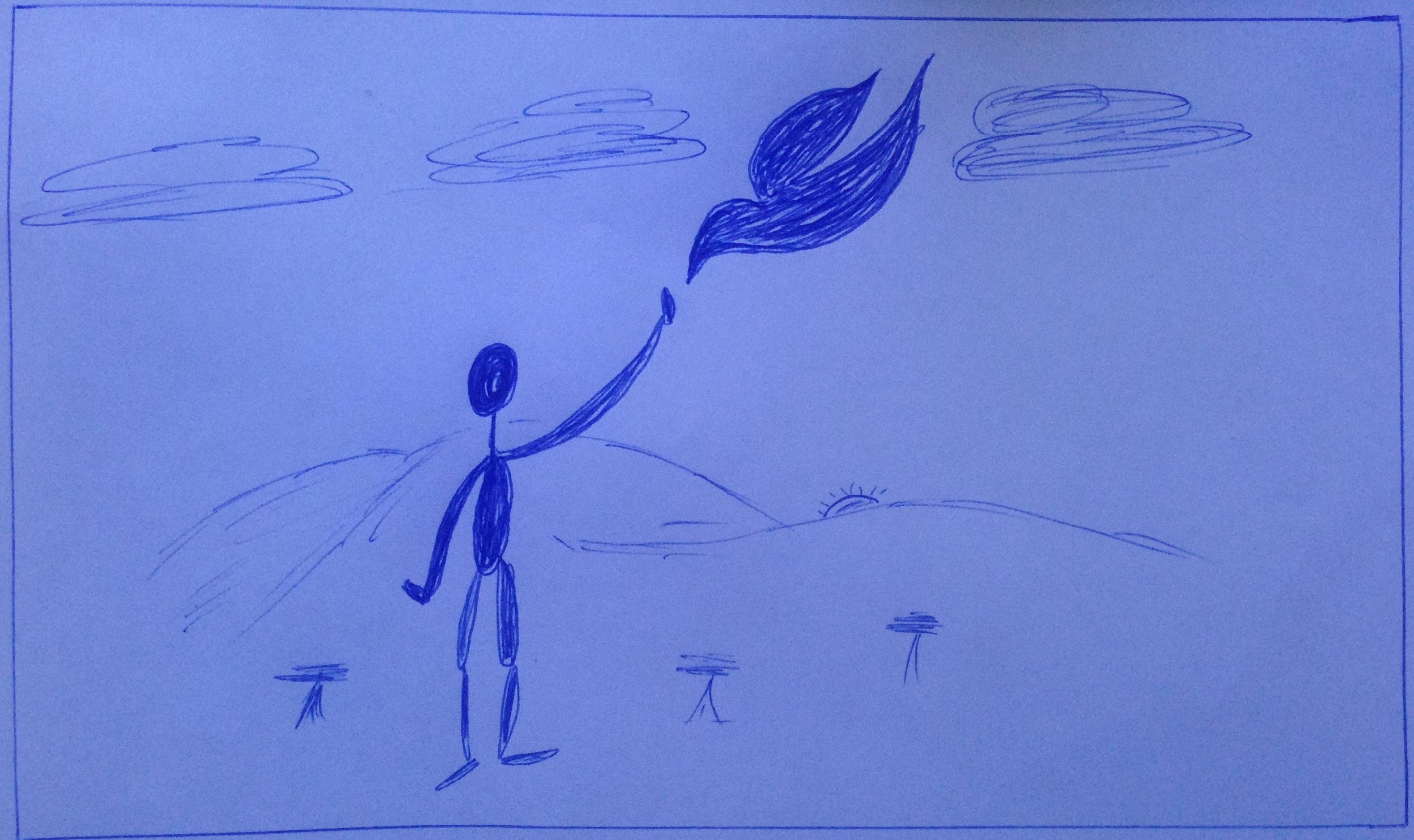Summary
Art is a powerful tool for passing across information and sharing ideas. This paper begins by presenting and describing the background of Buonarroti’s The Creation of Adam. This inspiration piece forms the basis for the presented personal piece. The paintings revolve around the connection between the heavens and earth. The discussion outlines the unique formal elements, similarities, and differences between the two works.
Inspiration Piece

Background
The idea to paint the Creation of Adam emerged when Pope Julius II invited Michelangelo to Rome to build his tomb. During the period, he faced several interruptions that encouraged him to start focusing on a spectacular work of art. Most of the commissioned works during the period revolved around the Biblical Book of Genesis. His painting describes the creation of humankind and the Earth (Fedi, 2018). These themes formed the basis for this masterpiece. This painting goes further to describe how God created and gave life to the first man on Earth.
Personal Art Piece

Background
This simple painting tries to describe how religious believers relate with God and rely on the Holy Spirit for care and protection. This scenario depicts a form of gift that can guide and empower people to overcome their pains and eventually achieve their religious goals (Subramaniam et al., 2016). The presented dove depicts the Holy Spirit while the identified person is a representation of all human beings on earth. This hypothetical view can encourage believers to pray and focus on the best ways to win the gift of the Holy Spirit.
Connection
These two pieces have thematic connections in the manner in which they describe how God supports mankind. In the first one by Buonarroti, it is notable that the life all human beings enjoy today is a gift from God. His presence and nature in three forms explain why the two images are related to each other. People need to look upon God for life, inspiration, blessings, and guidance. Additionally, the two works indicate that human beings rely on the heavens for life and hope (Subramaniam et al., 2016). Those who go against God’s teachings will not receive the relevant blessings. These works are similar because they present similar themes and messages. They link the Earth to heaven and describe how God dictates things on earth. The identifiable difference is that the first piece concentrates on the original source of life. The second one describes how human beings receive the Holy Spirit for guidance and empowerment.
They identified two works are not of the same medium. The first one is part of a chapel’s ceiling while the second one is painted on a piece of paper. The first medium influences the viewer’s opinions and experiences because it is found on a Church’s ceiling. This means that the individual will formulate religious thoughts and consult the other paintings in the selected series (Subramaniam et al., 2016). The second piece is simple and might not compel the viewer to develop additional spiritual thoughts.
The formal elements of these pieces of art appear to compare to each other. For instance, the artists have used lines to create contrast and movement. The two works present a sense of movement whereby the compositions appear to exchange life and the Holy Spirit respectively. The artists have also used different color shades to present a sense of mood and value (Fedi, 2018). However, the first inspirational piece is more detailed and offers more formal elements than the second.
References
Fedi, L. (2018). The Sistine Chapel is Michelangelo’s masterpiece. National Geographic. Web.
Subramaniam, M., Hanafi, J., & Putih, A. T. (2016). Teaching for art criticism: Incorporating Feldman’s critical analysis learning model in students’ studio practice. Malaysian Online Journal of Educational Technology, 4(1), 57-67. Web.